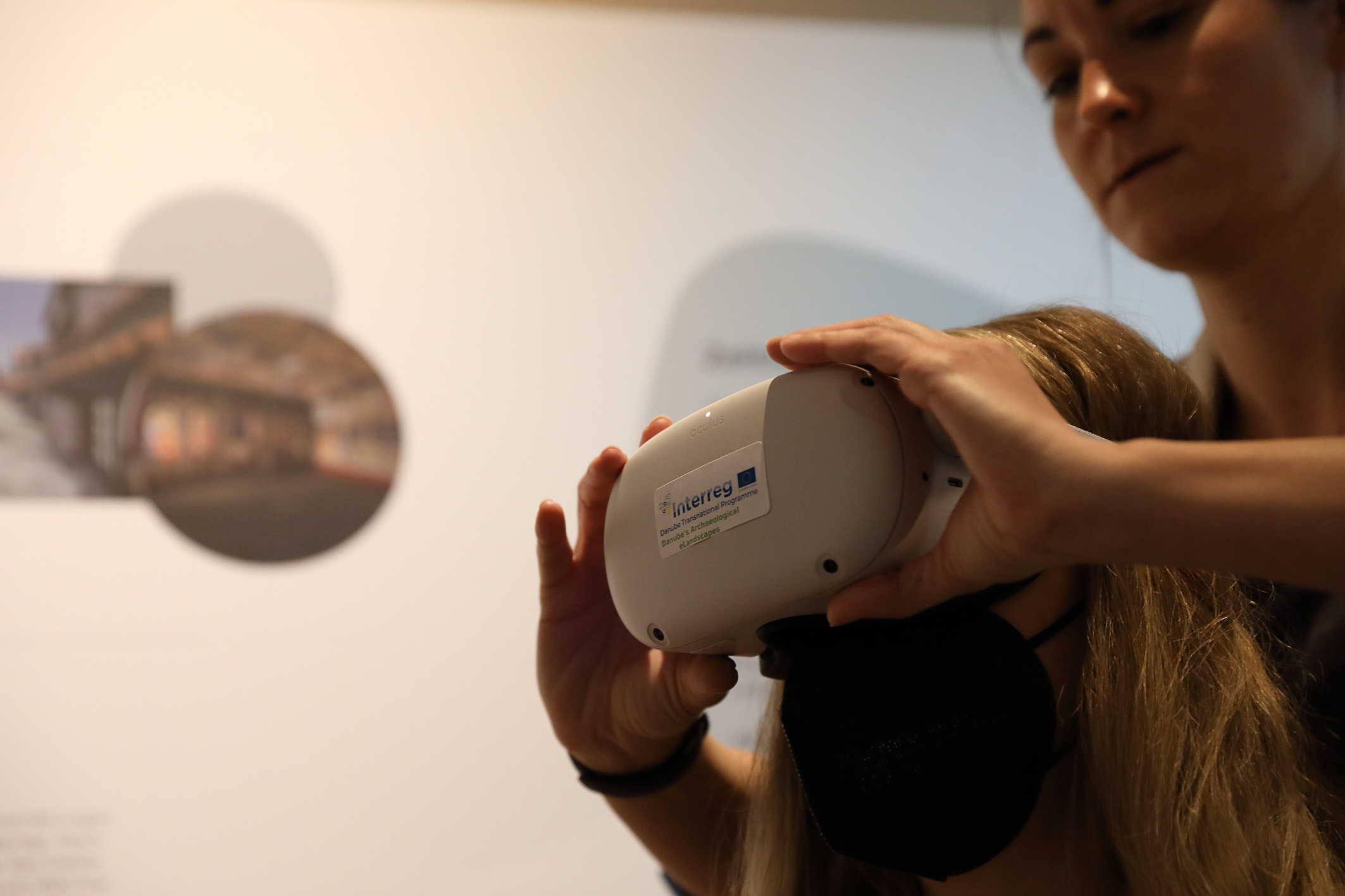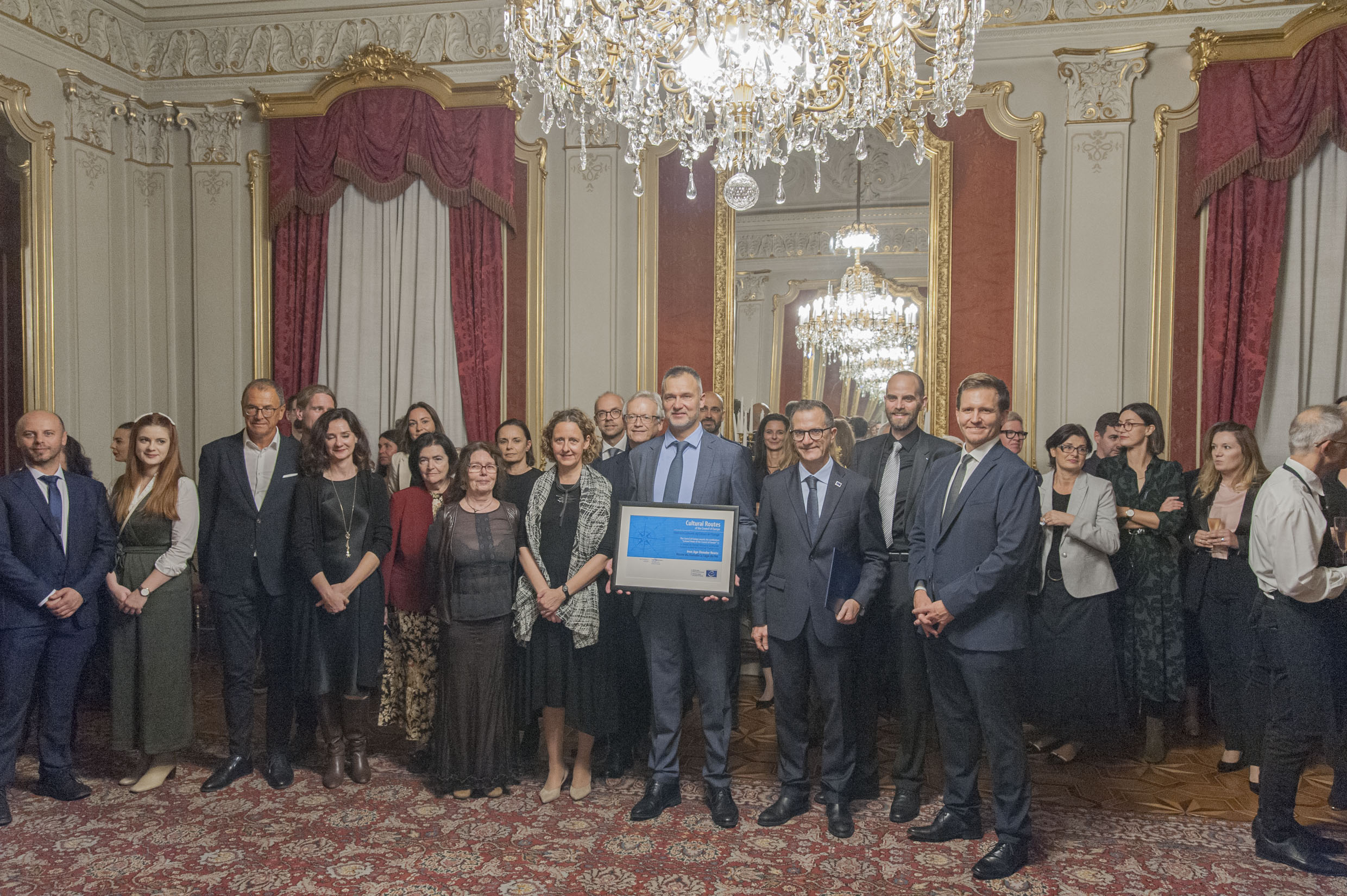Reviving Ancient Wonders: Sarah Kiszter on the Danube's Archaeological eLandscapes Project
29-08-2023
In an era where technology and heritage conservation are joining forces to bring the past to life, the Danube's Archaeological eLandscapes project is a trendsetter in the field, as it leverages cutting-edge technology to narrate the untold stories of our ancestors. At the forefront of this innovative endeavor is Sarah Kiszter, from the Universalmuseum Joanneum. In this interview, we delve into how digital storytelling can make the archaeological heritage of the Danube region more visible, help educate about it and preserve it.
August 28, 2023

VR headset used in museum exhibition.
1. How have the project results been used?
The project’s major innovation is a model connecting new technologies, the landscape approach in archaeological heritage protection and museum exhibitions in a new unique product built on intensive transnational cooperation. New technologies like state-of-the-art virtual and augmented reality applications were used to visualise archaeological knowledge in completely new ways. Visitors were encouraged to experience virtually reconstructed archaeological heritage in its original landscapes not only in their own country, but also in countries of other partners. Digital storytelling can help to build memories, it can be entertaining and informative – but it can also educate about our shared obligation to preserve these memories and our archaeological heritage.
2. Was the project's impact on policy making as expected?
The Danube’s Archaeological eLandscapes project is a good example how to tackle archaeological heritage with the help of state-of the art technology on several levels. The new transnational strategy, standards, and action plan, developed in the project, will have an impact on the level of single countries legislation. As individually set standards rarely create a broader impact, the partners decided on a transnational approach, which should not only add, but rather multiply the individual effects. Nevertheless, the partners also decided to create additional national recommendations and priority lists for the individual countries, due to the different developments in the countries of the Danube region.
3. Have the project results influenced policy decisions or led to any changes in the field?
Archaeological heritage does not stop at modern national borders, neither does the Danube´s Archaeological eLandscapes project. In times of increasing competition on the “leisure” market, our project was seeking new approaches for the joint promotion of hidden archaeological heritage in the Danube region. In this respect the project was the largest cross-promotion of archaeological landscapes ever attempted in the Danube region.
In times of increasing competition on the “leisure” market, our project was seeking new approaches for the joint promotion of hidden archaeological heritage in the Danube region.
4. Was there any resistance or challenges in incorporating the project results into their work?
In order to disseminate the strategy, presentations for local policy makers and other stakeholders were held by the partnership. The public debate with the stakeholders included representatives of various strands of public life, as for example policy makers and state/country or regional ministries responsible for culture, agriculture, economy, and tourism which was well received in all countries.
5. How can future projects better support use of the results to drive positive change?
The partnership created for the first time a transnational strategy and standards for virtual reconstruction and digital promotion of archaeological heritage to communicate the values of heritage contents to the public and there with secure its sustainable future. Many museums have started to use these new technologies sporadically in their presentations. But they are still lacking a systematic approach towards introducing these technologies in the museum, an approach, which not only considers the available funds, but also the most appropriate and efficient ways of presentations.
The strategies and standards form a set of two documents which present, promote, and evaluate the workflow for the creation of digital visualisations of archaeological heritage, as seen from the partnership of the project. A similar product could also be developed for cross-promoting other kinds of tangible and intangible heritage in the Danube region.

The project team in Zagreb, Croatia.
For more interviews with changemakers from the Danube region, go here.
